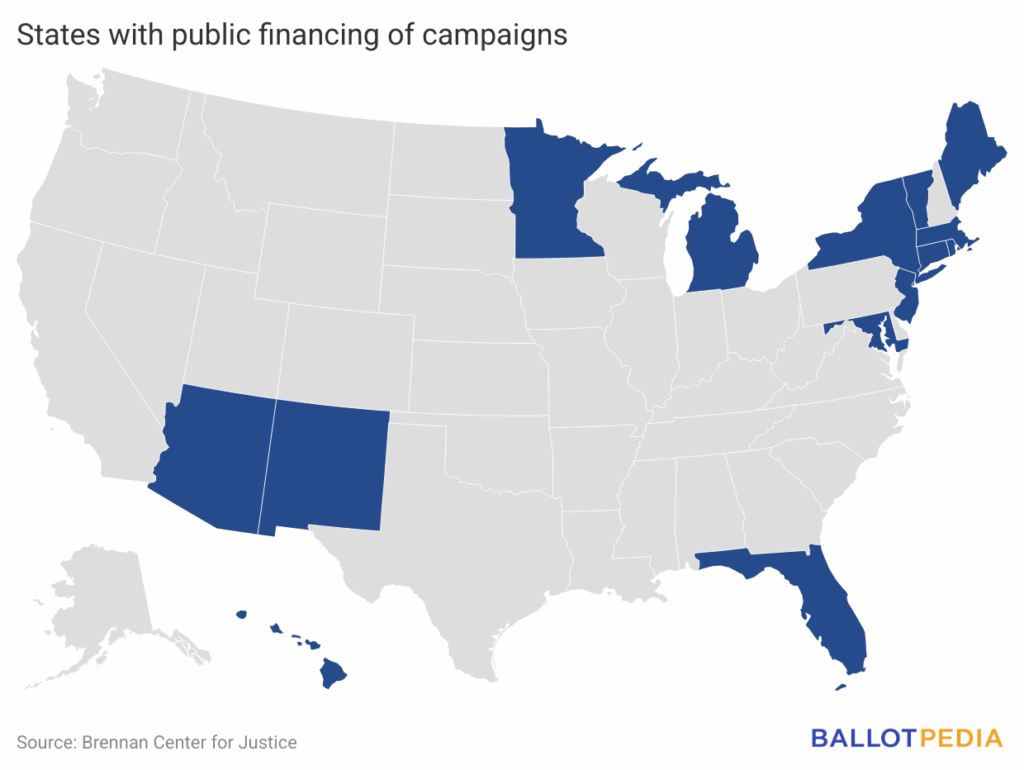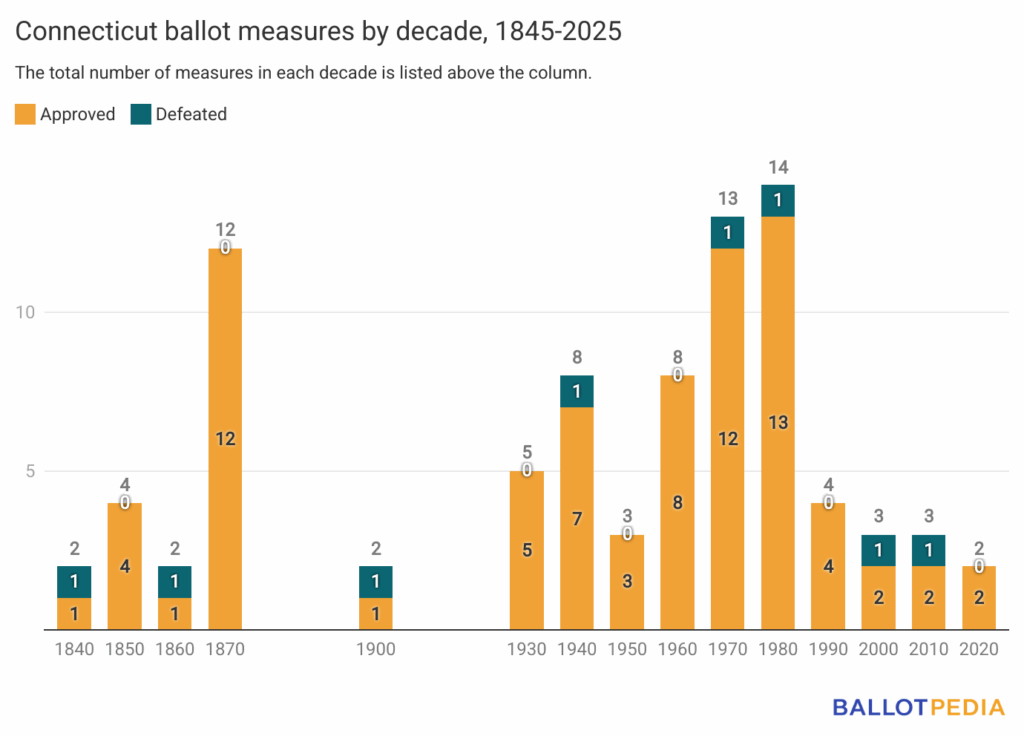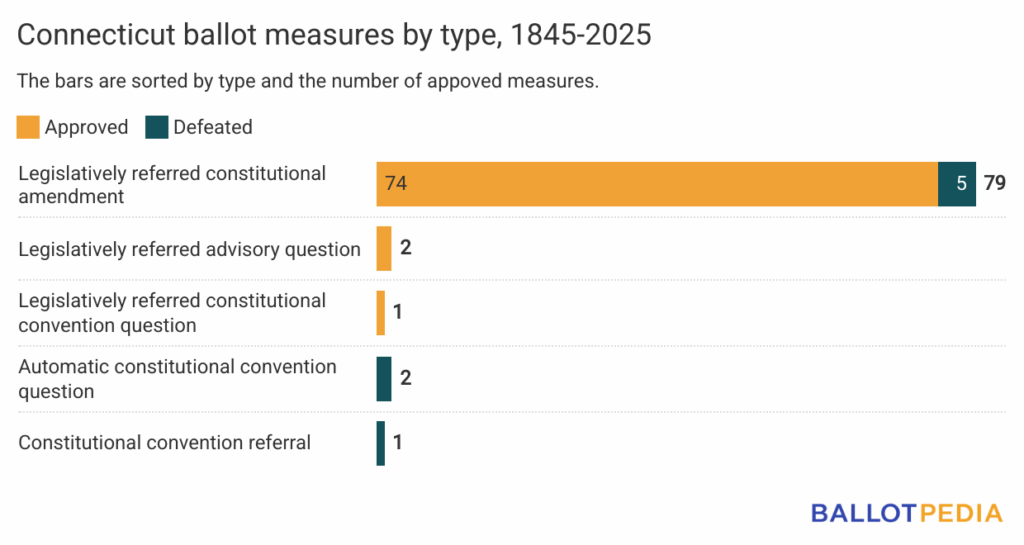Welcome to the Wednesday, Oct. 8, 2025, Brew.
By: Lara Bonatesta
Here’s what’s in store for you as you start your day:
- California voters will decide on a proposition to allow public financing of campaigns in Nov. 2026
- Eleven candidates running in New Orleans mayoral primary
- A comprehensive look at 179 years of ballot measures in Connecticut
California voters will decide on a ballot measure to allow public financing of campaigns in Nov. 2026
On Oct. 2, California Gov. Gavin Newsom (D) signed Senate Bill 42 (SB 42) to put a measure on the 2026 ballot that, if approved, would allow state and local governments to publicly fund campaigns.
The measure would repeal a portion of Proposition 73, which voters approved 58% to 42% in 1988, that prohibited public officers and candidates from using or receiving public funds for their campaigns.
The measure would repeal the prohibition on public officers and candidates expending or accepting public funds for campaign purposes, allowing state or local governments to establish programs for public funding of election campaigns.
SB 42 would require the state and local governments to develop expenditure limits and criteria for candidates to qualify for public funding. It would prohibit the use of public funds for legal defense fees, fines, or to repay a personal loan to a campaign. The measure would authorize the Legislature to amend the provisions of the law related to public campaign funding without voter approval. Voter approval would be required on all other provisions.
Fourteen states and Washington, D.C., allow some kind of public campaign financing for state offices. There are three common models of public financing:
- Matching funds — The government matches certain small-dollar, candidate-earned donations with public funds at a set rate.
- Vouchers – Eligible residents receive vouchers representing a small amount of public funds to donate to a participating candidate of their choice.
- Grants – Participating candidates receive grants of public funds.

The California Legislature passed SB 42 along party lines, with all Democrats voting in favor and all Republicans voting against. On Sept. 12, the state Assembly passed the bill 59-20. On Sept. 13, the state Senate passed it 29-8.
The California Democratic Party, California Working Families Party, the ACLU of California, California Common Cause, Consumer Watchdog, End Citizens United, and Represent.Us endorsed the measure. State Sen. Ben Allen (D-24), one of the bill’s authors, said, "The California Fair Elections Act is all about trying to improve our Democracy and elections. Public financing programs serve as a tool to lessen the power of big money, expand opportunities for more people to run for office, and allow candidates to focus more on voter appeal instead of donor appeal."
The California Taxpayers Association opposes the measure. David Kline, a spokesman for the group, said, "People when they pay taxes want to pay for schools, fire departments, libraries, roads, that sort of thing. The last thing they want to pay for is a negative political ad that is going to hit them on the radio or T.V. during election season.”
The California Legislature may only amend or repeal a voter-approved initiative if the initiative itself permits such changes. Otherwise, voters must approve changes. Proposition 73, an initiated state statute, does not authorize the Legislature to make changes without voter approval.
In 2016, the Legislature passed Senate Bill 1107, which allowed state or local governments to create dedicated funds that public officers or candidates could use for campaigning. On Aug. 26, 2019, a California Appeals Court upheld a lower court ruling overturning SB 1107. The Appeals Court ruled that voters would need to approve such changes to the law via ballot measure.
As of Oct. 6, three statewide ballot measures have qualified for the 2026 ballot in California. The first would require initiatives proposing supermajority requirements to pass by the same threshold as they propose. The other would eliminate the successor election when a state officer is recalled, which would leave the office vacant until it is filled according to state law.
. Click here to learn more about California’s 2026 ballot measures.
Eleven candidates running in New Orleans mayoral primary
Eleven candidates are running in the nonpartisan primary for mayor of New Orleans on Oct. 11. Royce Duplessis (D), Helena Moreno (D), and Oliver Thomas (D) lead in media attention. Incumbent Mayor LaToya Cantrell (D), who was first elected in 2017, is term-limited.
According to NOLA.com’s Sophie Kasakove and James Finn, since New Orleans is a predominantly Democratic city in a state with a Republican trifecta, the three leading candidates “are trying to convince voters they’re best positioned to defend the city's autonomy and traditions, while still working to show they can reach across the aisle to advance the city’s agenda in one of the country’s most conservative states and at a time when federal threats to autonomy and funding loom.”
Duplessis is a member of the Louisiana Senate. He was elected to represent District 5 in the 2022 special election. He previously represented District 93 in the Louisiana House of Representatives from 2018 to 2022.
Duplessis’ priorities include:
- Implementing “smarter police deployment by utilizing civilian staff for non-emergencies”
- Using the City’s Housing Trust Fund and other sources to create 40,000 new affordable housing units
- Creating “a local small business revolving loan or grant program” and “a property tax incentive for commercial buildings that house entrepreneurs.”
Moreno is a member of the New Orleans City Council. She was first elected at-large in 2017. Moreno served as the Council’s president from 2019 to 2023, after which she became its vice president. Moreno previously represented District 93 in the state House from 2010 to 2018.
Moreno’s priorities include:
- Auditing city departments “to ensure proper spending, personnel costs, effectiveness, and results”
- Implementing police technology “that identifies risks in real time to help preserve officer safety and right-size responses”
- Improving the Safety and Permits and the Code Enforcement departments
Thomas was first elected to represent District E on the New Orleans City Council in 2021. He previously represented District B on the Council from 1994 to 2002 and an at-large seat from 2002 to 2007. Thomas resigned from the Council in 2007 and served 37 months in prison after pleading guilty to a federal bribery charge.
Thomas’ priorities include:
- Moving to elect or publicly confirm the city’s next policy chief “to ensure community trust in law enforcement leadership”
- Launching a 90-Day Pothole Fix Guarantee Program
- Creating a Mayor’s Office of Ethics and Government Integrity “to prevent waste and misuse of city funds.”
Frank Janusa (R), Joseph Bikulege (Unaffiliated), Manny Chevrolet Bruno (Unaffiliated), Russell Butler (Unaffiliated), Eileen Carter (Unaffiliated), Renada Collins (Unaffiliated), Frank Scurlock (Unaffiliated), and Richard Twiggs Jr. (Unaffiliated) are also running.
Louisiana elections use a majority-vote system. All candidates compete in the same primary, and a candidate must win more than 50% of the vote to win the election outright. If no candidate wins more than 50%, the top two vote-getters advance to the general election. If necessary, the general election will take place on Nov. 15.
New Orleans is the 52nd most populous city in the U.S. Twenty-seven of the 100 most populous cities are holding mayoral elections in 2025. As of October 2025, the partisan breakdown of the mayors of the 100 largest U.S. cities is 66 Democrats, 23 Republicans, one Libertarian, three independents, and five nonpartisans. Two mayors' partisan affiliations are unknown.
Click here to see our full coverage of New Orleans’ mayoral election.
A comprehensive look at 179 years of ballot measures in Connecticut
Ballotpedia's Historical Ballot Measure Factbook will document nearly 200 years of direct democracy in the United States. This ongoing research effort will provide an unparalleled resource for researchers, reporters, and the public on how ballot measures have evolved, the issues they have covered, and their role in our civic life.
Today, let’s look at historical ballot measures in Connecticut. Our comprehensive inventory of Connecticut ballot measures spans from 1845 to 2024. In that time, Connecticut voters approved 77 measures and defeated 8 — a 90% approval rate.

In Connecticut, the General Assembly can refer measures to the ballot. The state has never voted on an amendment to authorize an initiative and referendum process.
The Connecticut Constitution requires an automatic constitutional convention question to appear on the ballot every 20 years. The General Assembly can also refer a constitutional convention question to the ballot. If a state constitutional convention is held, any amendments that delegates approve would be placed on the ballot for voters to decide.
While the majority of ballot measures have been legislatively referred constitutional amendments (79 of 85 measures, or 93%), voters have also decided on:
- Two advisory questions
- Two automatic constitutional convention questions
- One legislatively referred constitutional convention question
- One constitutional convention referral
Seventy-four (94%) of the legislatively referred constitutional amendments, both advisory questions, and the one legislatively referred constitutional convention question were approved. Neither of the automatic constitutional convention questions nor the single constitutional convention referral was approved.

Connecticut ballot measures have addressed 48 unique topics, ranging from redistricting to the salaries of government officials. The most common topics that appeared on the ballot have been voter registration (nine measures), voting age policy (eight measures), and state judicial selection (eight measures).
Here is a selection of important and interesting measures from the Connecticut Factbook:
- In 1855, voters approved a ballot measure requiring electors to be able to read any article of the state constitution or state statute.
- In 1876, voters approved an amendment 93%-7% which removed the word 'white' from the list of qualifications to vote in the Connecticut Constitution. The 15th Amendment to the U.S. Constitution, which says that the “right of citizens of the United States to vote shall not be denied or abridged by the United States or by any State on account of race, color, or previous condition of servitude,” was ratified in 1870.
- In 2014, voters defeated Question 1, which would have allowed the Legislature to eliminate restrictions for early voting and expand absentee ballot access.
- In 2024, voters approved a measure 58% - 42% authorizing the General Assembly to pass laws allowing no-excuse absentee voting.
Of the 85 statewide ballot measures in Connecticut, only one was decided by less than one percentage point. The measure — Question 2 — removed party levers from voting machines and was approved in 1986, with 302,899 (50.4%) voting 'Yes' and 297,827 (49.6%) voting 'No', leaving a margin of 0.8 percentage points.
The measure with the largest margin, at 96.9%, was Question 2 in 1876. The amendment, which moved the election date for state officials from April to November to coincide with Election Day, received 31,871 (98.4%) “Yes” and 503 (1.6%) “No” votes.
Click here to see our comprehensive coverage of Connecticut ballot measures, and here to find a list of our other completed factbooks.

